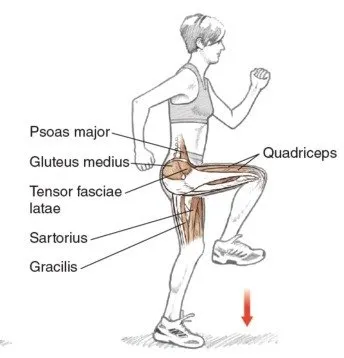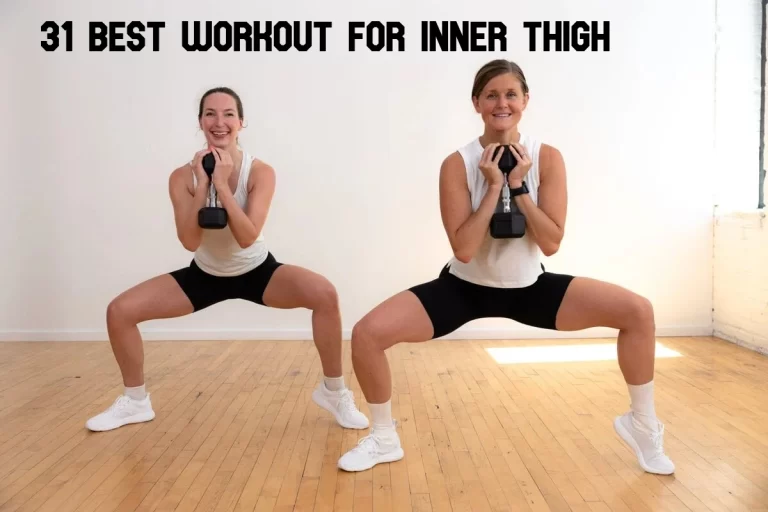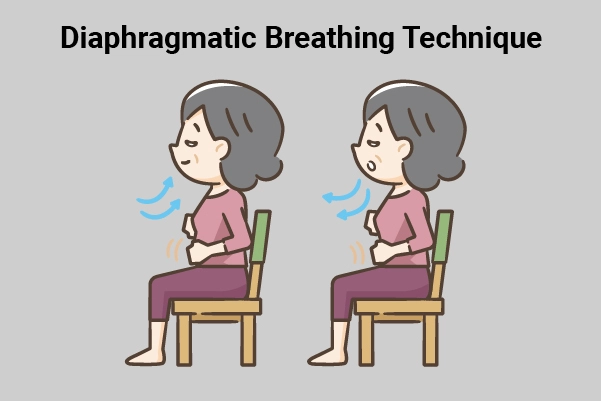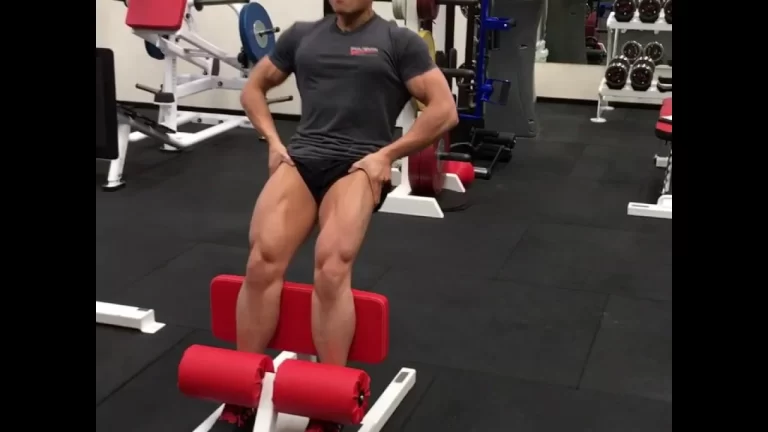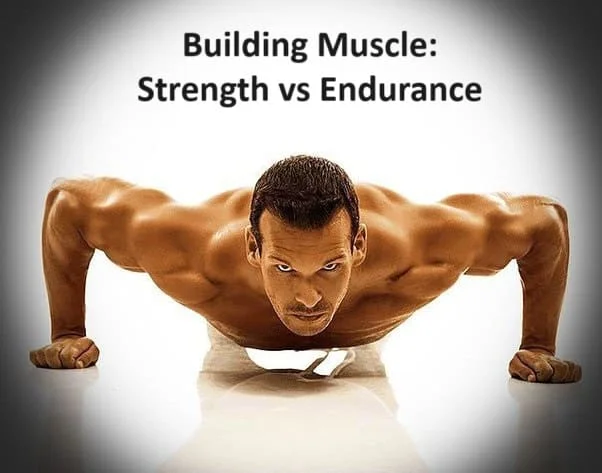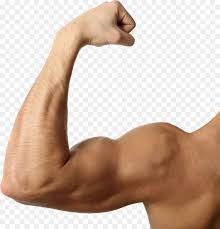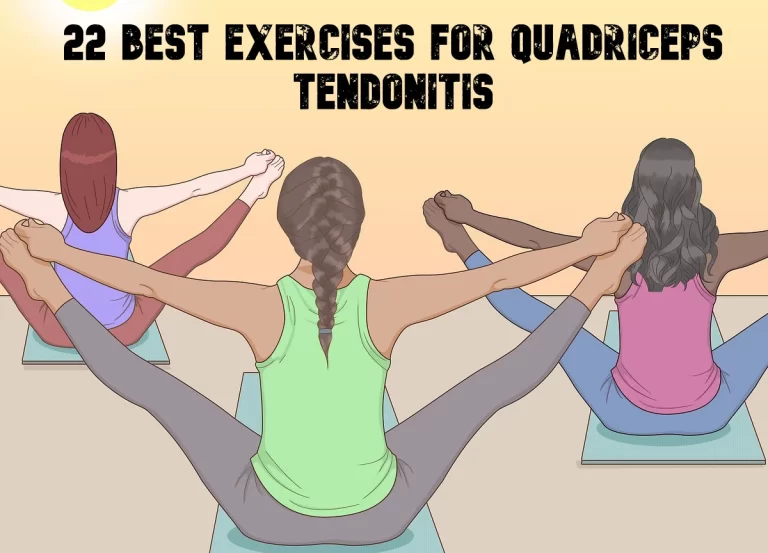Hip flexors exercise
Table of Contents
Introduction
- Hip flexors muscle exercise increased the strength of the hip flexor muscle. Strong hip flexors muscle help to maintain good posture and core stability. Hip flexors muscle exercise Reduces the likelihood of pain and injury due to weak hip flexors muscles.
- Hip flexors muscle are located on the front top part of your thigh in the pelvic area. It is because of the hip flexors muscle that you can flex your hips and bend your knees to your hips. They are very important to keep the posterior pelvic muscles in balance.
- The hip flexors are the group of muscles, the iliacus, the psoas major muscles (also called the iliopsoas), and the rectus femoris, which is a part of your quadriceps muscles. The quadriceps muscles run down from your hip joint to your knee joint.
- Every time you take the step, you are using your hip flexor muscles. Sitting for too long or all day shortens and tightens these muscles. Short muscles don’t generate as much power as lengthened muscles. When you go for activating these muscles, they might resist or not work as they should.
- Sitting all day, especially with habitually poor posture, can cause a condition known as hyperlordosis. This condition is also known as swayback or saddleback and happens when the inward curve of your spine in the low back is exaggerated
- This condition is more common than you might think in those with jobs that require a lot of sitting positions like computer programmers, office workers, and anyone who finds themselves at the desk for hours each day.
- Hip flexors muscle exercise includes two types of exercise
- Strengthening exercise
- Stretching exercise
Reasons You Should Strengthen Your Hip Flexors muscles
Strong hip flexors muscle help to maintain good posture and core stability
- The iliopsoas muscles, your main hip flexors muscle, play an important role in helping you maintain good posture and core stability. They each connect to the lumbar spine, travel through the pelvis, and then attach to the inside of the femur near the hip joint. As a result, the iliopsoas muscle is the only muscle that connects the upper and lower halves of the body.
- In our day-to-day activities such as sitting, standing, stair-climbing, running, or moving around some other way, the iliopsoas muscle is responsible for providing stability for your lower back, pelvis, and hips. all of which make up the “core” of the body. It is important for these areas to be strong and supported
Reverse the effects of sitting
- As you have likely heard before, sitting places the hip flexors muscle into a shortened position where they are asked to perform a lot of work to help them sit up straight for hours and hours each day. Over time, hip flexor muscles fatigue, tighten up, and actually become weaker.
- Adding some more exercises for your hip flexor muscle can help build the strength back up in these important muscles, increase blood flow to the area, and help the muscles lengthen out more effectively later on when you do some stretching of the hip flexor muscle.
Improve the symptoms of weak hip flexors muscle
- If you know what it feels like to have tight hip flexors, then you know what it feels like to have weak hip flexors muscles, as these often go hand-in-hand. Common symptoms of weak hip flexors muscles include:
- Tightness of the front of the hip and/or the lower back
- Reduced range of motion of the hips
- Stride length during walking or running feels “off”
- Clicking, popping, or clunking sensation felt in the hips during moving in certain ranges of motion
- Difficulty in activating posterior chain muscles (e.g. glutes and hamstrings), which may also feel tight
- Experiencing lower back and hip pain and discomfort after standing, sitting, or walking for longer periods of time
Reduce the likelihood of pain and injury due to weak hip flexors muscles
- When the hip flexors are weak, muscle imbalances can begin to develop in the surrounding areas of your body. This affects the alignment of the pelvis, restricts movement of the hips, and decreases stability around the lumbar spine. Ultimately, there is a chain reaction seen throughout your entire body.
- The mechanics of the body change and compensatory movement patterns develop. The pre-existing muscle imbalances become “stronger” and continue to hold the bones out of their natural alignment. Over time, this creates wear and tear on the structures of the body and leads to pain.
Strengthen hip flexors to improve athletic performance
- Having strong muscles around your hips (like your hip flexors, glutes muscle, etc.) allows the hip joints to work in each of their ranges of motion flexion, extension, abduction, adduction, internal rotation, and external rotation, and do so efficiently.
- Whether your sport involves running, jumping, squatting, throwing, hitting, skating, or changing directions, the strong and mobile hips support the body’s ability to produce force, power, and speed to increase athletic performance across the board.
Strengthening exercise
Lunge
- Lunges work the lead glute and quadriceps muscles (including the rectus femoris, which is also a hip flexor). They also stretch the hip flexors on the rear leg, which have to lengthen, depending on how far you can step forward.
- From the standing position, look straight ahead and take a generous step forward with your right foot. You have to keep your trunk straight throughout the movement.
- Bend your extended knee and transfer your weight onto the right leg. Continue to lower yourself slowly into the lunge until your left knee hovers just above, or softly touches, the ground. Your right knee should be directly above your right side ankle.
- Step back into the standing position. Repeat with your other side leg in front.

Floor-sliding mountain climbers
- You can grab some sliding discs, paper plates, or even hand towels. basically, anything that slides. Get ready to climb!
- Position yourself on a wood ground or another smooth surface.
- Place the sliders under the balls of your feet while in the pushup position.
- Pull your right leg toward your chest, alternating with the left leg as you would for standard mountain climbers.
- Go slowly at first, then you can pick up the pace.
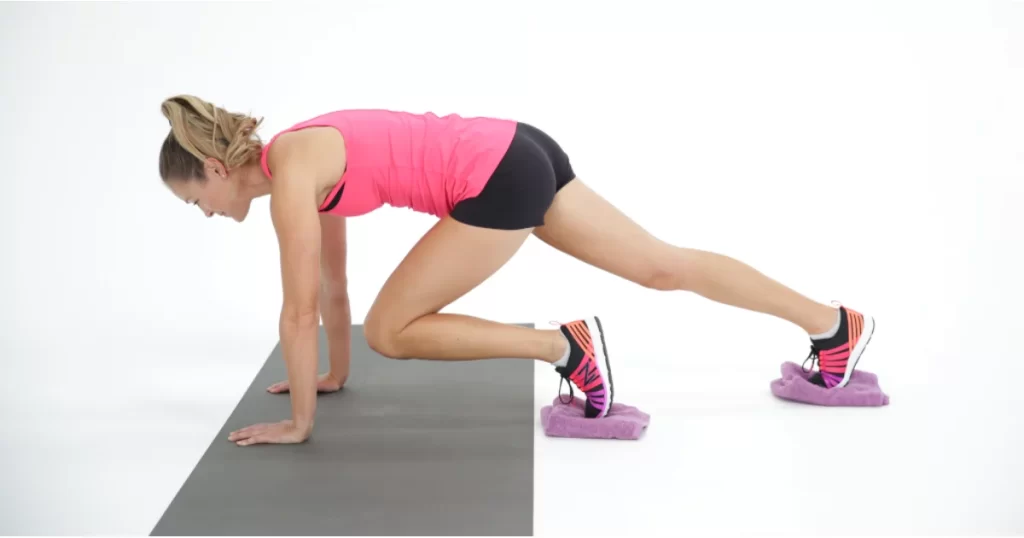
Straight-leg raise
- This exercise works the iliopsoas and the rectus femoris muscle. The abdominal muscles pitch into the stabilization of the trunk as the leg lifts.
- Lie on your back with one knee bent. Extend the other leg, keeping the knee straight.
- Tighten your abdominals as you lift the leg up so the thigh is in line with the other bent knee.
- Hold for a count of 2, then slowly lower to the beginning position. then Repeat.
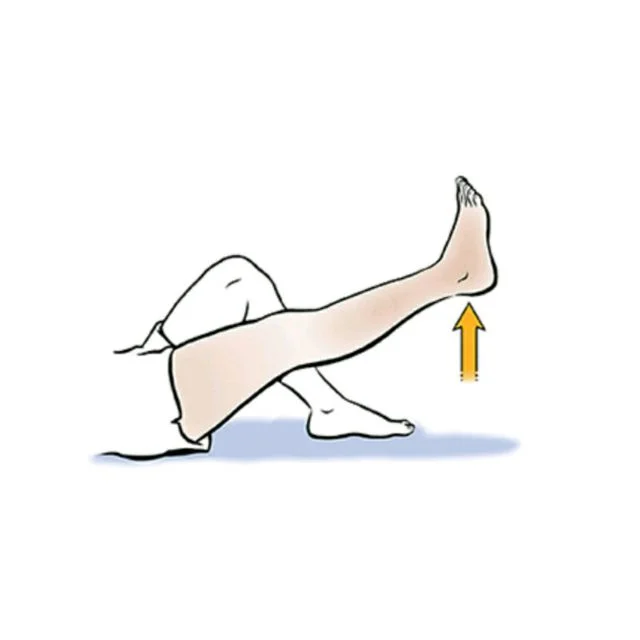
Seated straight-leg raise
- Sit on the ground with one leg extended and the back straight.
- Hug the other side knee to your chest.
- Engage your core and turn the other leg outwards slightly.
- Begin to slowly lift your leg from the ground.
- Hold for one second and then slowly lower your lifted leg to the ground.
- Perform 2 to 4 sets per side until failure.
- These exercises are deceptively challenging, especially if you have weak or tight hip flexors. Start off slow and if you feel a pinch or sharp feeling in the front of the hip, immediately stop and see a rehab practitioner to assess your hips.
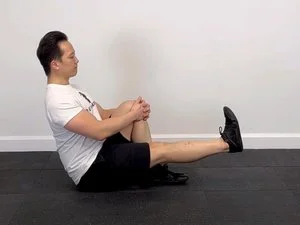
Psoas hold
- This exercise strengthens the deep hip flexor muscle known as the psoas, which can increase stride length and reduce injury. A win-win situation!
- From the standing position, bend your right knee and lift your upper leg up to the sky.
- Balance on your left foot while keeping the right knee and thigh at hip level for about 30 seconds.
- Lower your right leg slowly, then repeat with the left leg.
- Remember to keep your trunk tall during the entire motion. If your head bobs forward or your trunk is rounding, do not lift your leg as high.
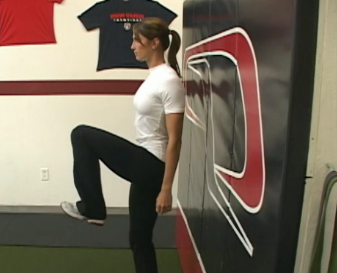
Jump Lunge
The jump lunge combines plyometric movement with the strengthening of the quadriceps, hip flexors, hamstrings, and glute muscles. Plyometric exercises like the jump lunge improve power and performance in your lower body.
- How to Do Jump Lunge
- Stand with the feet shoulder-width apart.
- Get into the lunge position: Take a big step forward with the right leg then shift your weight forward, so your heel touches the ground first.
- Lower your body so the forward leg is parallel to the ground. Place your arms at your sides.
- Jump up with both feet, then switch the position of feet mid-air. Your left leg will be now forward and your right leg back behind you. Land in the lunge position with left leg forward. You may pump your arms in the air while you jump.
- Repeat the lunge jump movement for 30 seconds or 10 jumps on both sides.
- Modification: The jump lunge exercise is an advanced move. If it is too difficult, take the polymeric jump out of the exercise and perform the stationary forward or reverse lunges or do a set of walking lunges.
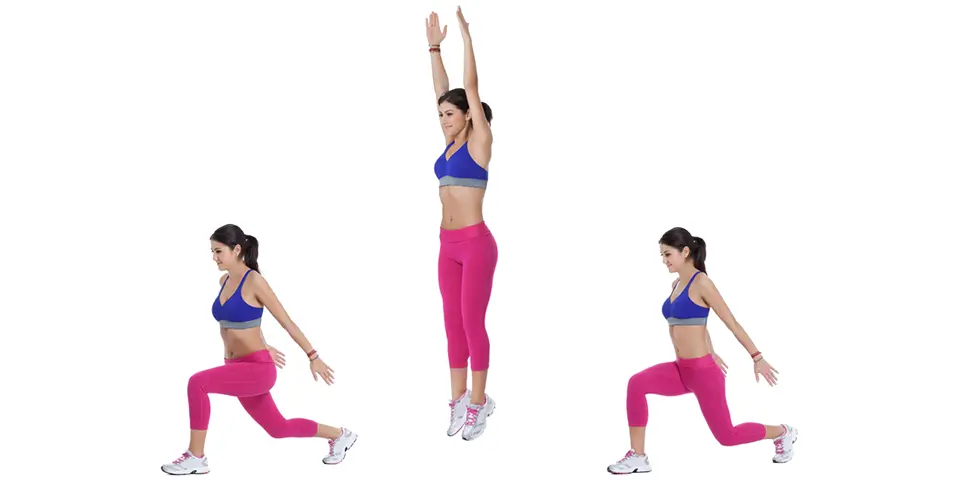
Bulgarian Split Squat
- Bulgarian split squats are an intermediate exercise that strengthens the hip flexors, glutes, and calves muscles. You need a bench or box that is the height of the knee. The move is performed unilaterally, which means that you can target one leg at a time. This can help to improve side-to-side muscle imbalances.
- How to Do Bulgarian Split Squats
- Set the bench or box behind you. Make sure it is knee height and level.
- Stand in front of the bench, about 2 feet, with your feet hip-width apart. You have to keep your chest and eyes pointing straight ahead. Do not round the shoulders.
- Starting with the right foot forward, Then pick up the left foot and place it on the bench behind you with the ball of your foot in contact with the bench.
- Keep your back straight and lower the left knee towards the ground, but do not let it touch the floor. It will hover over the ground before returning to the starting position. Your right knee should form a 90-degree angle, so your thigh is parallel to the ground. You will feel
- Press the right foot into the ground and push the top of the left foot into the toe box and then return to standing.
- Complete 12 to 15 repetitions on each leg.
- You can add resistance to this exercise by holding the dumbbell in each hand or a weight plate or small kettlebell with both hands.
- Modification: Ease into this exercise by starting with only body weight. As you progress, consider adding the lightweight and increasing as your legs and core get stronger. If having your leg on the bench is uncomfortable, bring the move to the ground. Keep your back foot on the ground as you perform the exercise.
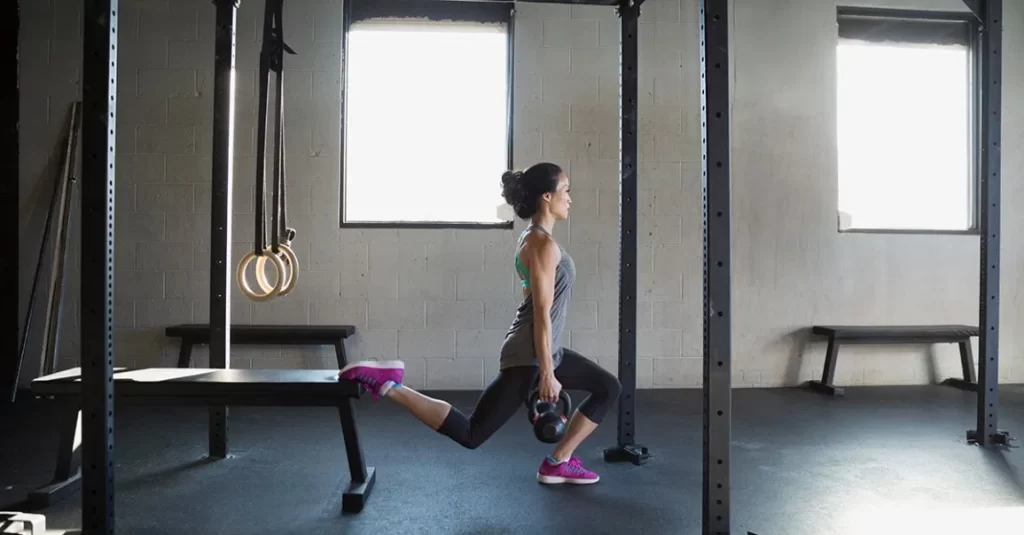
Kettlebell Swing
- The kettlebell swing is part cardio, part explosive strength, and all about working every muscle in the body. Your hip flexors, mostly, play an active role in performing this movement.
- How to Do Kettlebell Swing
- Place a kettlebell in front of you.
- Stand tall, feet slightly wider than hips, legs turned out slightly.
- Keeping a straight spine, bend your knees, and bend at hips to pick up the kettlebell with both hands.
- Pull your shoulders back and lift the chest.
- Bend your knees and bend at hips to swing the kettlebell between your legs (like passing a football), and then stand tall, swinging the kettlebell up in front of the chest as you squeeze your backside and press your hip forward. Try to swing the kettlebell to the level of the shoulder. Keep body weight towards heels.
- Lower a kettlebell and swing through your legs to repeat.
- You can Continue kettlebell swings for 60 seconds or 15 to 20 repetitions.
- Modifications: There’s not much you can do to modify the kettlebell swing move other than taking your time learning how to do it. Consider hiring a personal trainer or physical therapist to walk you through each step and watch as you perform the movement. They can make sure you are executing each step correctly.
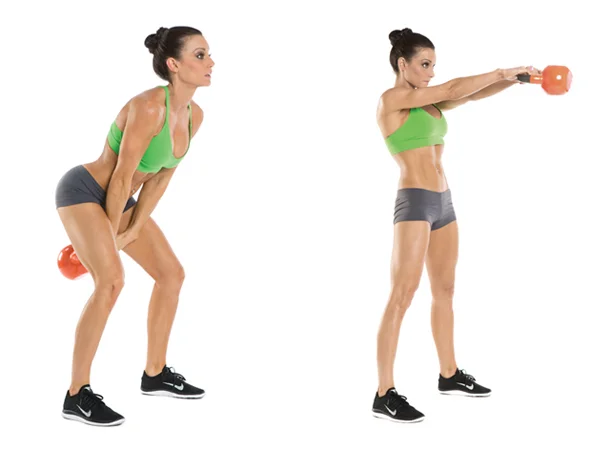
Banded Hip March
- The banded hip march (aka the psoas march) is an excellent move to strengthen your hip flexors. Plus, the addition of a band around the ankles means you are working against resistance making the exercise more challenging.
- How to Do Banded Hip March
- Stand with your arms at your sides hip-distance apart. You have to Keep your chest lifted and core engaged.
- Loop the mini resistance band around the balls of both feet.
- Contract your abdominal muscles, and bring the right knee up and out in front of you like you are marching. Stop when it reaches the height of the hips.
- Raise the left arm as your right knee comes up towards your hips. You will repeat the opposite arm to the opposite leg the entire round.
- Slowly lower the right leg and repeat on the other side.
- Do 8 to 10 reps on each leg, then alternating sides.
- Modification: You can drop the resistance band and just do a psoas march. Think of this as the low-impact high knees exercise. You may also shorten the march by bringing your knee up half the distance.
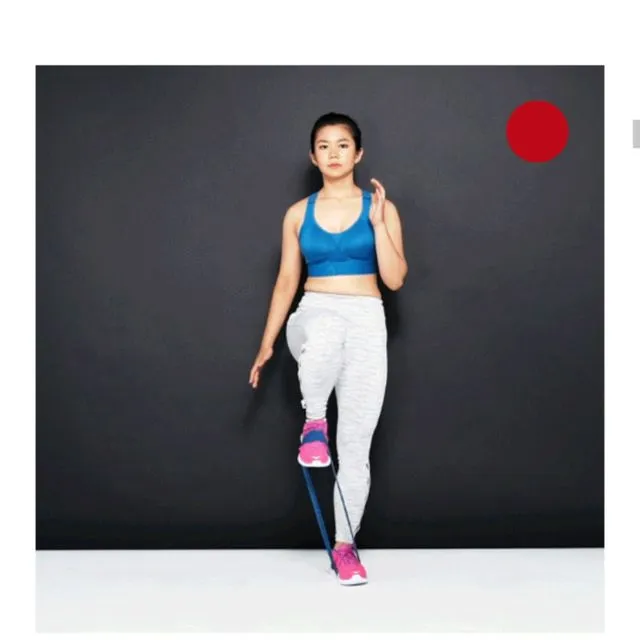
Squats
- Squats are an excellent exercise to strengthen hip muscles.
- Squats work on the muscles of the legs and engage the core at the same time. Squats have the added advantage of being very flexible, meaning the person can adjust the intensity to fit their changing fitness needs.
- To perform a squat:
- Start in the standing position with feet slightly spread apart and arms to the side.
- Bend the knees and push the buttocks toward your back.
- Drop down until the legs are roughly parallel to the ground, keeping your knees in line with the feet.
- Keep the abs tight and bring the arms up to the level of the chest.
- you can repeat 10 to 30 times depending on your fitness level.
- As strength grows, people can add can jumps or weights for more challenges.

Clamming
Clamming is a very popular exercise among dancers, who need to have strong hip muscles to help with rotation. In starting, people can do clamming without resistance.
- To perform a claim, a person should:
- Lay on their side with legs stacked on top of each other and bent at the knee slightly.
- Open your top knee so that it points towards the ceiling.
- While opening the knee, keep the feet stacked together, and do not roll backward on your bottom hip.
- To finish the repetition, close the leg.
- Repeat 10 to 30 times on each side.
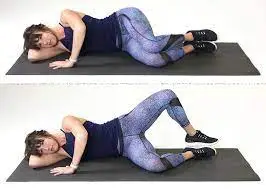
Stretching exercise
Supine Hip Flexor Stretch
- Lie on your back on the right edge of the bed with both legs extended the bed.
- Bend your left leg, with your knee pointing toward the ceiling and the foot flat on the bed. You have to Make sure your back is pressed flat against the bed.
- Let your right leg fall off the side of the bed, and keep your back flat.
- Bend your knee back as possible as you can, keeping your back flat and your right leg hanging off the bed.
- For an even deeper stretch, grab the left knee and pull it toward your chest.
- Repeat on the other side.
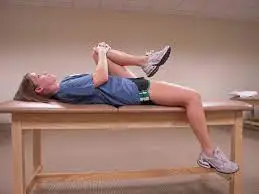
Side-Lying Hip Flexor Stretch
- Lie on the ground on your left side with your knees bent so they are in line with your hips. Your thighs and shins should make a 90-degree angle.
- Move your right foot backward and grab the top of the ankle with your right hand gently.
- Then Slowly and gently pull your foot with your right hand, bringing your leg around behind you while keeping your pelvis tucked under and being careful not to arch your back. You should feel a stretch in the front of your thighs and your hip flexor on your right side.
- Repeat on the opposite side.
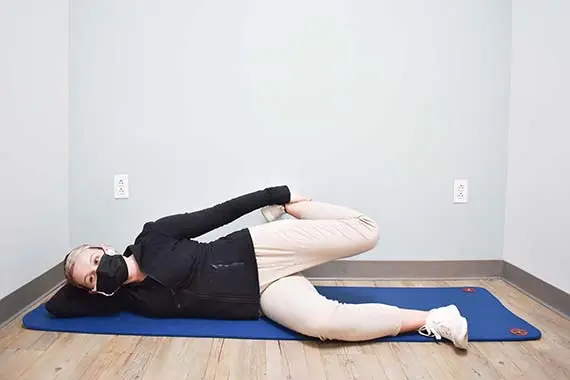
Seated butterfly
- The seated butterfly stretch stretches the hips, thighs, and lower back muscles. This exercise is easy to perform and is done from a seated position.
- To perform this stretch:
- Sit up straight with an engaged core.
- Push the bottoms of each foot together while pushing your knees out.
- Pull heels towards the body and relax the knees, allowing them to drift towards the floor.
- you can hold it for about 20 to 30 seconds, breathing deeply.
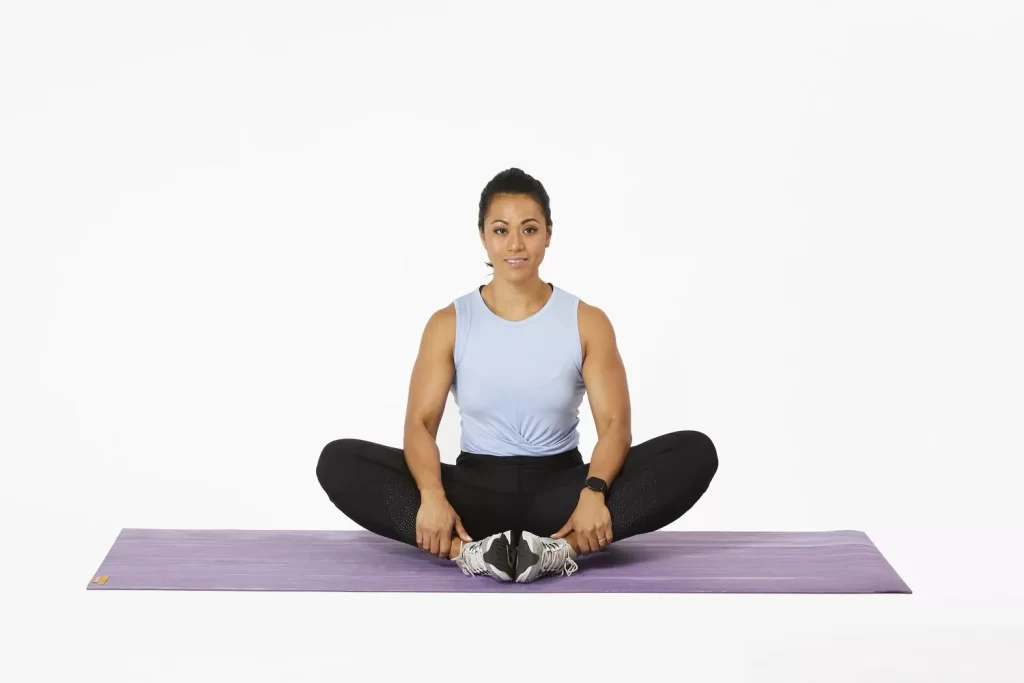
Half-kneeling hip flexor stretch
- This simple move will stretch the iliopsoas/hip flexors on the rear leg and the glutes on your front leg. You can perform this with a folded towel under your knee or on the yoga mat.
- Kneel on the ground with your left foot flat in front of you and your right knee on the ground behind you.
- Keep your trunk straight during this exercise. You can keep your hands on the left knee for balance.
- Gently slide your right knee back until you can feel a small stretch in the front of your hip.
- Squeeze the right glute like you are pushing forward, bringing your trunk and hips toward the left foot. Tuck your hips slightly, creating the pelvic tilt.
- Take a deep breath and hold this pose for 10 to 30 seconds.
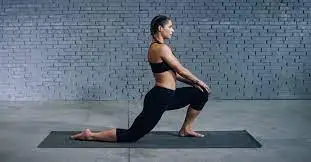
Knee to chest stretch
- Lie on your back with your legs extended on the ground. Slowly bend one knee toward the chest.
- Keeping your back flat, pull your knee as close to your chest as you can without discomfort.
- Stretch your straight leg out as far as you can and squeeze your glute.
- Return to the starting position and repeat with the opposite leg.
- If you do not feel the stretch, try performing this stretch on the bench with your lower leg hanging off.

Pigeon Pose
- Pigeon, the popular yoga pose, is an advanced move. Do it only if you feel comfortable with this pose. Feel free to modify it by doing a figure four stretch while lying down or sitting in the chair.
- Start in the plank position.
- Lift your left foot off the ground and slide it forward so your knee is on the ground next to your left hand and your foot is near your right hand. Exactly where your knee and toes fall will depend on the flexibility.
- Slide your right leg back as far as you can while keeping the hips square. Lower yourself to the ground and onto your elbows, bringing your upper body down as far as you can.
- Hold the stretch without letting the chest fall. Once you feel like you have got a good stretch, switch sides.
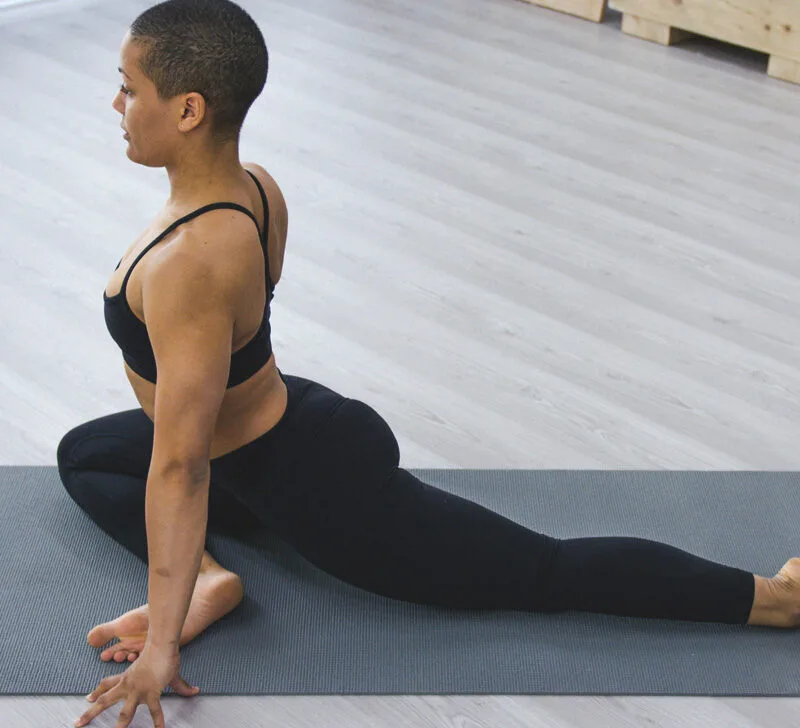
Bridge
- This exercise strengthens the gluteal muscles but can also help lengthen your hip flexors.
- Lie on your back with your arms at your sides, knees bent, and feet on the ground, hip-distance apart. Try to position your feet so your fingers can touch the heels.
- While squeezing your glutes, press into your heels and lift your hips off the ground toward the ceiling. You should feel this in your glutes and the hamstrings, not your lower back.
- Hold the position for a few seconds before returning to the initial position, then repeat several times. Do not forget to breathe!

What are the Safety and Precautions you should take during hip flexors stretch?
There is a guideline you have to follow during hip flexors stretch:
- You have to hold the hip flexors stretch for a certain amount of time, like 20 to 30 seconds. That’s why they are typically suggested for after workouts, once the group of muscles is comfortable. Since the hip flexors muscle is connected with the
- hips and trunk, it is critical to do stretches with precise form.
- Go slow when going into the stretch, and never ever go to the point of discomfort.
- To obtain the most out of your stretching routine, experts suggested performing flexibility exercises for all of the major muscle and tendon groups a minimum of two to three times a week.
- Do not stretch the muscle where you have prior injuries, such as a sprain, bursitis, fracture, etc.
- Do not bounce during the stretch, it can cause injuries to your muscle.
- Never skip stretching, it can cause a reduction in your range of muscle. you can improve it by doing the daily stretch.
Benefits of Doing Hip Flexor Stretches
- Hip flexor muscle stretches help to improve hip mobility. The hips are involved in a wide range of daily activities, both inside and outside the gym
- Hip flexor stretches help to alleviate pain
- Hip flexor stretches help to increase flexibility
- Hip flexor stretches help to improve posture
Hip flexor exercises for beginners
Straight-leg raise
This exercise works the iliopsoas and the rectus femoris muscle. The abdominal muscles pitch into the stabilization of the trunk as the leg lifts. Lie on your back with one knee bent. Extend the other leg, keeping the knee straight. Tighten your abdominals as you lift the leg up so the thigh is in line with the other bent knee. Hold for a count of 2, then slowly lower to the beginning position. then Repeat.
Lunge
Lunges work the lead glute and quadriceps muscles (including the rectus femoris, which is also a hip flexor). They also stretch the hip flexors on the rear leg, which have to lengthen, depending on how far you can step forward. From the standing position, look straight ahead and take a generous step forward with your right foot. You have to keep your trunk straight throughout the movement. Bend your extended knee and transfer your weight onto the right leg. Continue to lower yourself slowly into the lunge until your left knee hovers just above, or softly touches, the ground. Your right knee should be directly above your right side ankle. Step back into the standing position. Repeat with your other side leg in front.
Side-Lying Hip Flexor Stretch
Lie on the ground on your left side with your knees bent so they are in line with your hips. Your thighs and shins should make a 90-degree angle. Move your right foot backward and grab the top of the ankle with your right hand gently. Then Slowly and gently pull your foot with your right hand, bringing your leg around behind you while keeping your pelvis tucked under and being careful not to arch your back. You should feel a stretch in the front of your thighs and your hip flexor on your right side. Repeat on the opposite side.
Hip flexor exercises Bodybuilding
Jump Lunge
The jump lunge combines plyometric movement with the strengthening of the quadriceps, hip flexors, hamstrings, and glute muscles. Plyometric exercises like the jump lunge improve power and performance in your lower body. to Do Jump Lunge, Stand with the feet shoulder-width apart. Get into the lunge position: Take a big step forward with the right leg then shift your weight forward, so your heel touches the ground first. Lower your body so the forward leg is parallel to the ground. Place your arms at your sides. Jump up with both feet, then switch the position of feet mid-air. Your left leg will be now forward and your right leg back behind you. Land in the lunge position with left leg forward. You may pump your arms in the air while you jump. Repeat the lunge jump movement for 30 seconds or 10 jumps on both sides. Modification: The jump lunge exercise is an advanced move. If it is too difficult, take the polymeric jump out of the exercise and perform the stationary forward or reverse lunges or do a set of walking lunges.
Bulgarian Split Squat
Bulgarian split squats are an intermediate exercise that strengthens the hip flexors, glutes, and calves muscles. You need a bench or box that is the height of the knee. The move is performed unilaterally, which means that you can target one leg at a time. This can help to improve side-to-side muscle imbalances. to Do Bulgarian Split Squats, Set the bench or box behind you. Make sure it is knee height and level. Stand in front of the bench, about 2 feet, with your feet hip-width apart. You have to keep your chest and eyes pointing straight ahead. Do not round the shoulders. Starting with the right foot forward, Then pick up the left foot and place it on the bench behind you with the ball of your foot in contact with the bench. Keep your back straight and lower the left knee towards the ground, but do not let it touch the floor. It will hover over the ground before returning to the starting position. Your right knee should form a 90-degree angle, so your thigh is parallel to the ground. You will feel Press the right foot into the ground and push the top of the left foot into the toe box and then return to standing. Complete 12 to 15 repetitions on each leg. You can add resistance to this exercise by holding the dumbbell in each hand or a weight plate or small kettlebell with both hands. Modification: Ease into this exercise by starting with only body weight. As you progress, consider adding the lightweight and increasing as your legs and core get stronger. If having your leg on the bench is uncomfortable, bring the move to the ground. Keep your back foot on the ground as you perform the exercise.
Kettlebell Swing
The kettlebell swing is part cardio, part explosive strength, and all about working every muscle in the body. Your hip flexors, mostly, play an active role in performing this movement. to Do Kettlebell Swing, Place a kettlebell in front of you. Stand tall, feet slightly wider than hips, legs turned out slightly. Keeping a straight spine, bend your knees, and bend at hips to pick up the kettlebell with both hands. Pull your shoulders back and lift the chest. Bend your knees and bend at hips to swing the kettlebell between your legs (like passing a football), and then stand tall, swinging the kettlebell up in front of the chest as you squeeze your backside and press your hip forward. Try to swing the kettlebell to the level of the shoulder. Keep body weight towards heels. Lower a kettlebell and swing through your legs to repeat. You can Continue kettlebell swings for 60 seconds or 15 to 20 repetitions. Modifications: There’s not much you can do to modify the kettlebell swing move other than taking your time learning how to do it. Consider hiring a personal trainer or physical therapist to walk you through each step and watch as you perform the movement. They can make sure you are executing each step correctly.
Pigeon Pose
Pigeon, the popular yoga pose, is an advanced move. Do it only if you feel comfortable with this pose. Feel free to modify it by doing a figure four stretch while lying down or sitting in the chair. Start in the plank position. Lift your left foot off the ground and slide it forward so your knee is on the ground next to your left hand and your foot is near your right hand. Exactly where your knee and toes fall will depend on the flexibility. Slide your right leg back as far as you can while keeping the hips square. Lower yourself to the ground and onto your elbows, bringing your upper body down as far as you can. Hold the stretch without letting the chest fall. Once you feel like you have got a good stretch, switch sides.
Hip flexor exercises for seniors
Straight-leg raise
This exercise works the iliopsoas and the rectus femoris muscle. The abdominal muscles pitch into the stabilization of the trunk as the leg lifts. Lie on your back with one knee bent. Extend the other leg, keeping the knee straight. Tighten your abdominals as you lift the leg up so the thigh is in line with the other bent knee. Hold for a count of 2, then slowly lower to the beginning position. then Repeat.
Bridge
This exercise strengthens the gluteal muscles but can also help lengthen your hip flexors. Lie on your back with your arms at your sides, knees bent, and feet on the ground, hip-distance apart. Try to position your feet so your fingers can touch the heels. While squeezing your glutes, press into your heels and lift your hips off the ground toward the ceiling. You should feel this in your glutes and the hamstrings, not your lower back. Hold the position for a few seconds before returning to the initial position, then repeat several times. Do not forget to breathe
Side-Lying Hip Flexor Stretch
Lie on the ground on your left side with your knees bent so they are in line with your hips. Your thighs and shins should make a 90-degree angle. Move your right foot backward and grab the top of the ankle with your right hand gently. Then Slowly and gently pull your foot with your right hand, bringing your leg around behind you while keeping your pelvis tucked under and being careful not to arch your back. You should feel a stretch in the front of your thighs and your hip flexor on your right side. Repeat on the opposite side.
Hip flexor stretch
Side-Lying Hip Flexor Stretch
Lie on the ground on your left side with your knees bent so they are in line with your hips. Your thighs and shins should make a 90-degree angle. Move your right foot backward and grab the top of the ankle with your right hand gently. Then Slowly and gently pull your foot with your right hand, bringing your leg around behind you while keeping your pelvis tucked under and being careful not to arch your back. You should feel a stretch in the front of your thighs and your hip flexor on your right side. Repeat on the opposite side.
Seated butterfly
The seated butterfly stretch stretches the hips, thighs, and lower back muscles. This exercise is easy to perform and is done from a seated position. To perform this stretch: Sit up straight with an engaged core. Push the bottoms of each foot together while pushing your knees out. Pull heels towards the body and relax the knees, allowing them to drift towards the floor. you can hold it for about 20 to 30 seconds, breathing deeply.
Pigeon Pose
Pigeon, the popular yoga pose, is an advanced move. Do it only if you feel comfortable with this pose. Feel free to modify it by doing a figure four stretch while lying down or sitting in the chair. Start in the plank position. Lift your left foot off the ground and slide it forward so your knee is on the ground next to your left hand and your foot is near your right hand. Exactly where your knee and toes fall will depend on the flexibility. Slide your right leg back as far as you can while keeping the hips square. Lower yourself to the ground and onto your elbows, bringing your upper body down as far as you can. Hold the stretch without letting the chest fall. Once you feel like you have got a good stretch, switch sides.
Hip flexor exercises for athletes
Knee to chest stretch
Lie on your back with your legs extended on the ground. Slowly bend one knee toward the chest. Keeping your back flat, pull your knee as close to your chest as you can without discomfort. Stretch your straight leg out as far as you can and squeeze your glute. Return to the starting position and repeat with the opposite leg. If you do not feel the stretch, try performing this stretch on the bench with your lower leg hanging off.
Banded Hip March
The banded hip march (aka the psoas march) is an excellent move to strengthen your hip flexors. Plus, the addition of a band around the ankles means you are working against resistance making the exercise more challenging. to Do Banded Hip March, Stand with your arms at your sides hip-distance apart. You have to Keep your chest lifted and core engaged. Loop the mini resistance band around the balls of both feet. Contract your abdominal muscles, and bring the right knee up and out in front of you like you are marching. Stop when it reaches the height of the hips. Raise the left arm as your right knee comes up towards your hips. You will repeat the opposite arm to the opposite leg the entire round. Slowly lower the right leg and repeat on the other side. Do 8 to 10 reps on each leg, then alternating sides. Modification: You can drop the resistance band and just do a psoas march. Think of this as the low-impact high knees exercise. You may also shorten the march by bringing your knee up half the distance.
Hip flexor exercises with weights
Bulgarian Split Squat
Bulgarian split squats are an intermediate exercise that strengthens the hip flexors, glutes, and calves muscles. You need a bench or box that is the height of the knee. The move is performed unilaterally, which means that you can target one leg at a time. This can help to improve side-to-side muscle imbalances. to Do Bulgarian Split Squats, Set the bench or box behind you. Make sure it is knee height and level. Stand in front of the bench, about 2 feet, with your feet hip-width apart. You have to keep your chest and eyes pointing straight ahead. Do not round the shoulders. Starting with the right foot forward, Then pick up the left foot and place it on the bench behind you with the ball of your foot in contact with the bench. Keep your back straight and lower the left knee towards the ground, but do not let it touch the floor. It will hover over the ground before returning to the starting position. Your right knee should form a 90-degree angle, so your thigh is parallel to the ground. You will feel Press the right foot into the ground and push the top of the left foot into the toe box and then return to standing. Complete 12 to 15 repetitions on each leg. You can add resistance to this exercise by holding the dumbbell in each hand or a weight plate or small kettlebell with both hands. Modification: Ease into this exercise by starting with only body weight. As you progress, consider adding the lightweight and increasing as your legs and core get stronger. If having your leg on the bench is uncomfortable, bring the move to the ground. Keep your back foot on the ground as you perform the exercise.
Kettlebell Swing
The kettlebell swing is part cardio, part explosive strength, and all about working every muscle in the body. Your hip flexors, mostly, play an active role in performing this movement. to Do Kettlebell Swing, Place a kettlebell in front of you. Stand tall, feet slightly wider than hips, legs turned out slightly. Keeping a straight spine, bend your knees, and bend at hips to pick up the kettlebell with both hands. Pull your shoulders back and lift the chest. Bend your knees and bend at hips to swing the kettlebell between your legs (like passing a football), and then stand tall, swinging the kettlebell up in front of the chest as you squeeze your backside and press your hip forward. Try to swing the kettlebell to the level of the shoulder. Keep body weight towards heels. Lower a kettlebell and swing through your legs to repeat. You can Continue kettlebell swings for 60 seconds or 15 to 20 repetitions. Modifications: There’s not much you can do to modify the kettlebell swing move other than taking your time learning how to do it. Consider hiring a personal trainer or physical therapist to walk you through each step and watch as you perform the movement. They can make sure you are executing each step correctly.
Hip flexor exercises for runners
Half-kneeling hip flexor stretch
This simple move will stretch the iliopsoas/hip flexors on the rear leg and the glutes on your front leg. You can perform this with a folded towel under your knee or on the yoga mat. Kneel on the ground with your left foot flat in front of you and your right knee on the ground behind you. Keep your trunk straight during this exercise. You can keep your hands on the left knee for balance. Gently slide your right knee back until you can feel a small stretch in the front of your hip. Squeeze the right glute like you are pushing forward, bringing your trunk and hips toward the left foot. Tuck your hips slightly, creating the pelvic tilt. Take a deep breath and hold this pose for 10 to 30 seconds.
Seated butterfly
The seated butterfly stretch stretches the hips, thighs, and lower back muscles. This exercise is easy to perform and is done from a seated position. To perform this stretch: Sit up straight with an engaged core. Push the bottoms of each foot together while pushing your knees out. Pull heels towards the body and relax the knees, allowing them to drift towards the floor. you can hold it for about 20 to 30 seconds, breathing deeply.
FAQ
the best exercise to strengthen hip flexors is the first Straight-leg raise. This exercise works the iliopsoas and the rectus femoris muscle. The abdominal muscles pitch into the stabilization of the trunk as the leg lifts. Lie on your back with one knee bent. Extend the other leg, keeping the knee straight. Tighten your abdominals as you lift the leg up so the thigh is in line with the other bent knee. Hold for a count of 2, then slowly lower to the beginning position. then Repeat. The second exercise is Lunge. Lunges work the lead glute and quadriceps muscles (including the rectus femoris, which is also a hip flexor). They also stretch the hip flexors on the rear leg, which have to lengthen, depending on how far you can step forward. From the standing position, look straight ahead and take a generous step forward with your right foot. You have to keep your trunk straight throughout the movement. Bend your extended knee and transfer your weight onto the right leg. Continue to lower yourself slowly into the lunge until your left knee hovers just above, or softly touches, the ground. Your right knee should be directly above your right side ankle. Step back into the standing position. Repeat with your other side leg in front. and third is Floor-sliding mountain climbers. You can grab some sliding discs, paper plates, or even hand towels. basically, anything that slides. Get ready to climb! Position yourself on a wood ground or another smooth surface.
Place the sliders under the balls of your feet while in the pushup position. Pull your right leg toward your chest, alternating with the left leg as you would for standard mountain climbers. Go slowly at first, then you can pick up the pace.
To train your hip flexors first exercise is Bulgarian Split Squat. Bulgarian split squats are an intermediate exercise that strengthens the hip flexors, glutes, and calves muscles. You need a bench or box that is the height of the knee. The move is performed unilaterally, which means that you can target one leg at a time. This can help to improve side-to-side muscle imbalances. to Do Bulgarian Split Squats, Set the bench or box behind you. Make sure it is knee height and level. Stand in front of the bench, about 2 feet, with your feet hip-width apart. You have to keep your chest and eyes pointing straight ahead. Do not round the shoulders. Starting with the right foot forward, Then pick up the left foot and place it on the bench behind you with the ball of your foot in contact with the bench. Keep your back straight and lower the left knee towards the ground, but do not let it touch the floor. It will hover over the ground before returning to the starting position. Your right knee should form a 90-degree angle, so your thigh is parallel to the ground. You will feel Press the right foot into the ground and push the top of the left foot into the toe box and then return to standing. Complete 12 to 15 repetitions on each leg. You can add resistance to this exercise by holding the dumbbell in each hand or a weight plate or small kettlebell with both hands. Modification: Ease into this exercise by starting with only body weight. As you progress, consider adding the lightweight and increasing as your legs and core get stronger. If having your leg on the bench is uncomfortable, bring the move to the ground. Keep your back foot on the ground as you perform the exercise. The second exercise is Kettlebell Swing. The kettlebell swing is part cardio, part explosive strength, and all about working every muscle in the body. Your hip flexors, mostly, play an active role in performing this movement. to Do Kettlebell Swing, Place a kettlebell in front of you. Stand tall, feet slightly wider than hips, legs turned out slightly. Keeping a straight spine, bend your knees, and bend at hips to pick up the kettlebell with both hands. Pull your shoulders back and lift the chest. Bend your knees and bend at hips to swing the kettlebell between your legs (like passing a football), and then stand tall, swinging the kettlebell up in front of the chest as you squeeze your backside and press your hip forward. Try to swing the kettlebell to the level of the shoulder. Keep body weight towards heels. Lower a kettlebell and swing through your legs to repeat. You can Continue kettlebell swings for 60 seconds or 15 to 20 repetitions. Modifications: There’s not much you can do to modify the kettlebell swing move other than taking your time learning how to do it. Consider hiring a personal trainer or physical therapist to walk you through each step and watch as you perform the movement. They can make sure you are executing each step correctly.
the best exercise to strengthen hip flexors at home is the first Straight-leg raise. This exercise works the iliopsoas and the rectus femoris muscle. The abdominal muscles pitch into the stabilization of the trunk as the leg lifts. Lie on your back with one knee bent. Extend the other leg, keeping the knee straight. Tighten your abdominals as you lift the leg up so the thigh is in line with the other bent knee. Hold for a count of 2, then slowly lower to the beginning position. then Repeat. The second exercise is Lunge. Lunges work the lead glute and quadriceps muscles (including the rectus femoris, which is also a hip flexor). They also stretch the hip flexors on the rear leg, which have to lengthen, depending on how far you can step forward. From the standing position, look straight ahead and take a generous step forward with your right foot. You have to keep your trunk straight throughout the movement. Bend your extended knee and transfer your weight onto the right leg. Continue to lower yourself slowly into the lunge until your left knee hovers just above, or softly touches, the ground. Your right knee should be directly above your right side ankle. Step back into the standing position. Repeat with your other side leg in front. and third is Floor-sliding mountain climbers. You can grab some sliding discs, paper plates, or even hand towels. basically, anything that slides. Get ready to climb! Position yourself on a wood ground or another smooth surface.
Place the sliders under the balls of your feet while in the pushup position. Pull your right leg toward your chest, alternating with the left leg as you would for standard mountain climbers. Go slowly at first, then you can pick up the pace. and fourth is Bridge. This exercise strengthens the gluteal muscles but can also help lengthen your hip flexors. Lie on your back with your arms at your sides, knees bent, and feet on the ground, hip-distance apart. Try to position your feet so your fingers can touch the heels. While squeezing your glutes, press into your heels and lift your hips off the ground toward the ceiling. You should feel this in your glutes and the hamstrings, not your lower back. Hold the position for a few seconds before returning to the initial position, then repeat several times. Do not forget to breathe
To lose your hip flexors you can do Side-Lying Hip Flexor Stretch. for this exercise, Lie on the ground on your left side with your knees bent so they are in line with your hips. Your thighs and shins should make a 90-degree angle. Move your right foot backward and grab the top of the ankle with your right hand gently. Then Slowly and gently pull your foot with your right hand, bringing your leg around behind you while keeping your pelvis tucked under and being careful not to arch your back. You should feel a stretch in the front of your thighs and your hip flexor on your right side. Repeat on the opposite side. The second exercise is the Seated butterfly. The seated butterfly stretch stretches the hips, thighs, and lower back muscles. This exercise is easy to perform and is done from a seated position. To perform this stretch: Sit up straight with an engaged core. Push the bottoms of each foot together while pushing your knees out. Pull heels towards the body and relax the knees, allowing them to drift towards the floor. you can hold it for about 20 to 30 seconds, breathing deeply.

